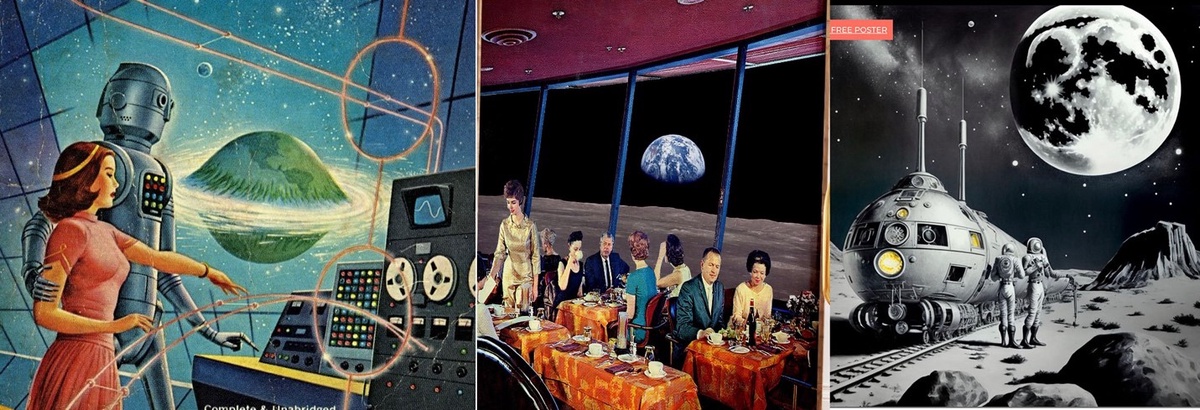As humans, we worry about our future, determining the best course of action for our survival. As we have progressed, our lifestyles have changed, and difficult tasks have become easy due to automation. However, no matter how advanced technology has become, one restraint remains constant: the ambiguity surrounding the future.
No one can predict the future; all we have is the present. That being said, we can, however, have differing perceptions of the future.
Some envision a techno-utopia where organic and automated resources anticipate and satisfy our needs. Some believe the future won't be a technologically advanced society but a time when people will be awaiting the arrival of Jesus Christ to save them. Others believe the end of the world will be the end of all life as we know it.
Let's take our present reality as an example; the idea of a fully-developed underground high-speed mag-lev train seems too distant in the future – say, a hundred-and-ten years. But such a system may already be in the works. So, it forces us to ask ourselves, what other current technologies now in development might help us navigate the struggles of a world in change?
Let's discuss the various perceptions people have of what the world might look like in 110 years.
Technological Utopia
On the brighter spectrum of things, people believe we will be living in a technologically advanced utopia. As life for human beings is becoming easier by the day, especially with the advent of artificial intelligence, we can only imagine how far we will develop as a society. People believe that we will be achieving incredible feats in areas such as medicine and energy production, which is currently a major plateau in our existence. A former Google engineer, Ray Kurzweil, predicted that humans might even accomplish immortality, or something close to it, through nanobots.
Dystopian Nightmare
On the flip side of things, it is most likely that humans may orchestrate their own demise. Google's AI "godfather" Geoffrey Hinton resigned from the company, leaving a bombshell statement to the BBC where he highlighted the dangers of AI chatbots. He admits they might not be as intelligent as us but will soon be. We have seen depictions of this reality in movies such as I-Robot, starring Will Smith. Even animated movies like WALL-E show how industrialization can make our earth toxic.
Warfare Dystopia
Some people also envision a dystopian earth where crime and deviance are monitored through state surveillance and governed by bureaucratic rule. This post-apocalyptic setting is portrayed in movies like "Mad Max" or "The Book of Eli" showing a warlord-governed society. Others imagine our world and society unfolding across this century at the same pace we've always known, with modest improvements.
Video games like the Fallout series are notorious for adapting a nuclear-aggravated dystopia. People speculate that as friction grows between nations over natural resources, we will face a similar fate 100 years down the line.
Genesis II (1973) Calling It In
Among the various science fiction stories, one particularly sticks out the most. Gene Roddenberry's Genesis II (1973) gives us a post-apocalyptic, dystopian perception of how the world will look in 2133.
During the last century, well-renowned writers like Arthur C. Clarke, Michael Crichton, and Gene Roddenberry understood that the road to civilization's advances could be bumpy. Gene Roddenberry went as far as to theorize that before welcoming the 23rd-century sophistication of Star Trek, the world might first have to struggle through a great conflict.
This was the theme behind his first SF film after producing the original Star Trek series—that film was entitled Genesis II (1973), and March 17th this year marked the film's 50th year since first airing.
March 17 this year marked the film's 50th year since first airing"
The Great Conflict that Genesis II (1973) theorized about eroded civilization and forced societies into tribal enclaves. In Genesis II (1973), the ideals of humanity that survived into the 22nd century were those of PAX, a throwback to our year—yes!—but also a repository and a perpetuating flame, lighting the way toward world peace and renewed stability.
But PAX alone couldn't revive a broken world. Fortunately, in Gene Roddenberry's creative work, PAX had access to a fully-developed subterranean high-speed transcontinental mag-lev train network, honey-combing the planet. It bridged continents in just hours. PAX teams could scour the globe for remnants of civilization and bring food, medicine, and a semblance of government to remote regions of a post-apocalyptic earth.
In his memoir, CATCHING LAMEDS: Reflections of an Unconventional Life, Author Theodore Rickles emphasizes the beauty of Genesis II (1973) and how it was ahead of its time. For more unique perspectives like these and a deep dive into the unconventional, pick up your copy now!
CATCHING LAMEDS: Reflections of an Unconventional Life is available on Amazon.


No comments yet